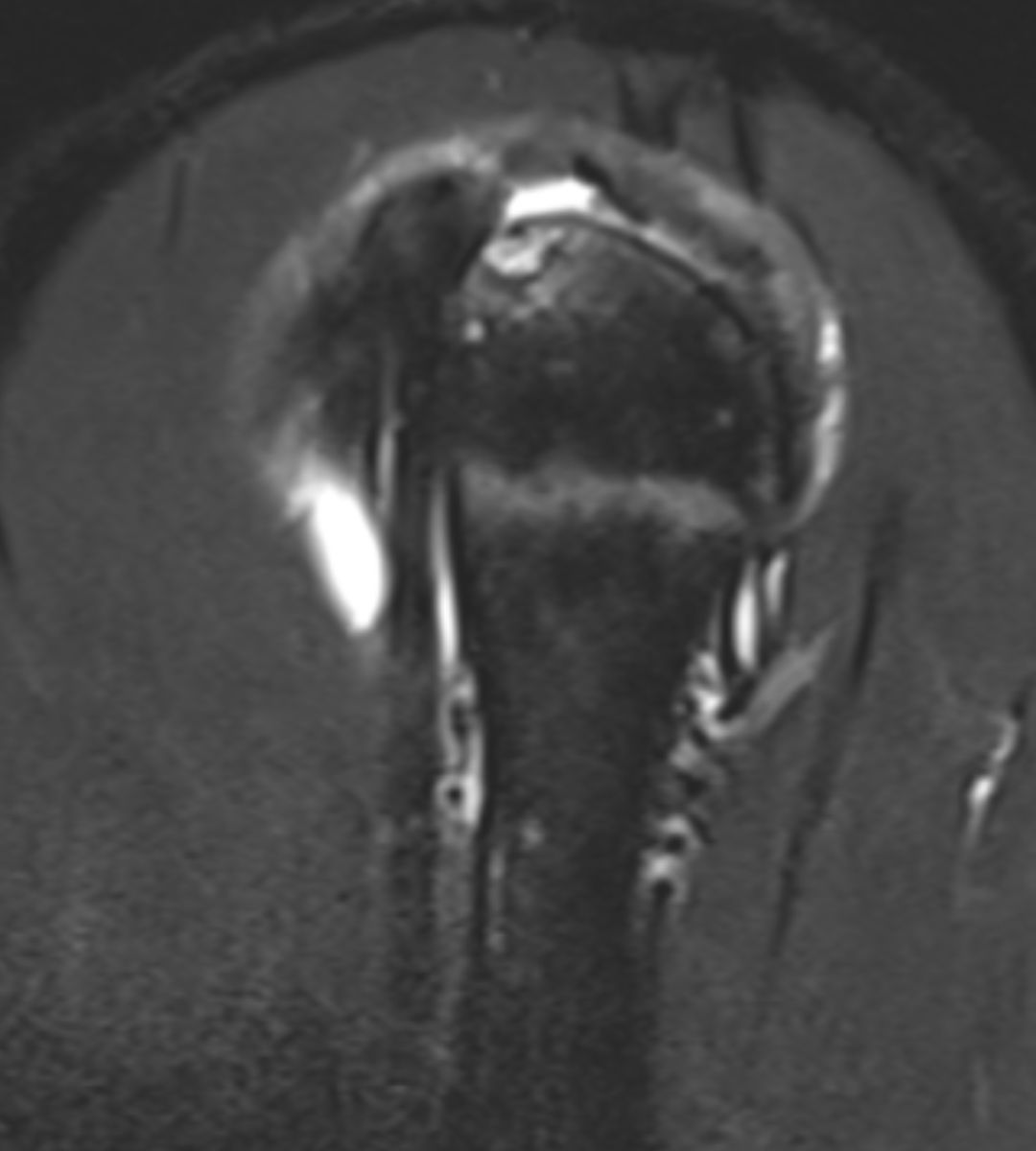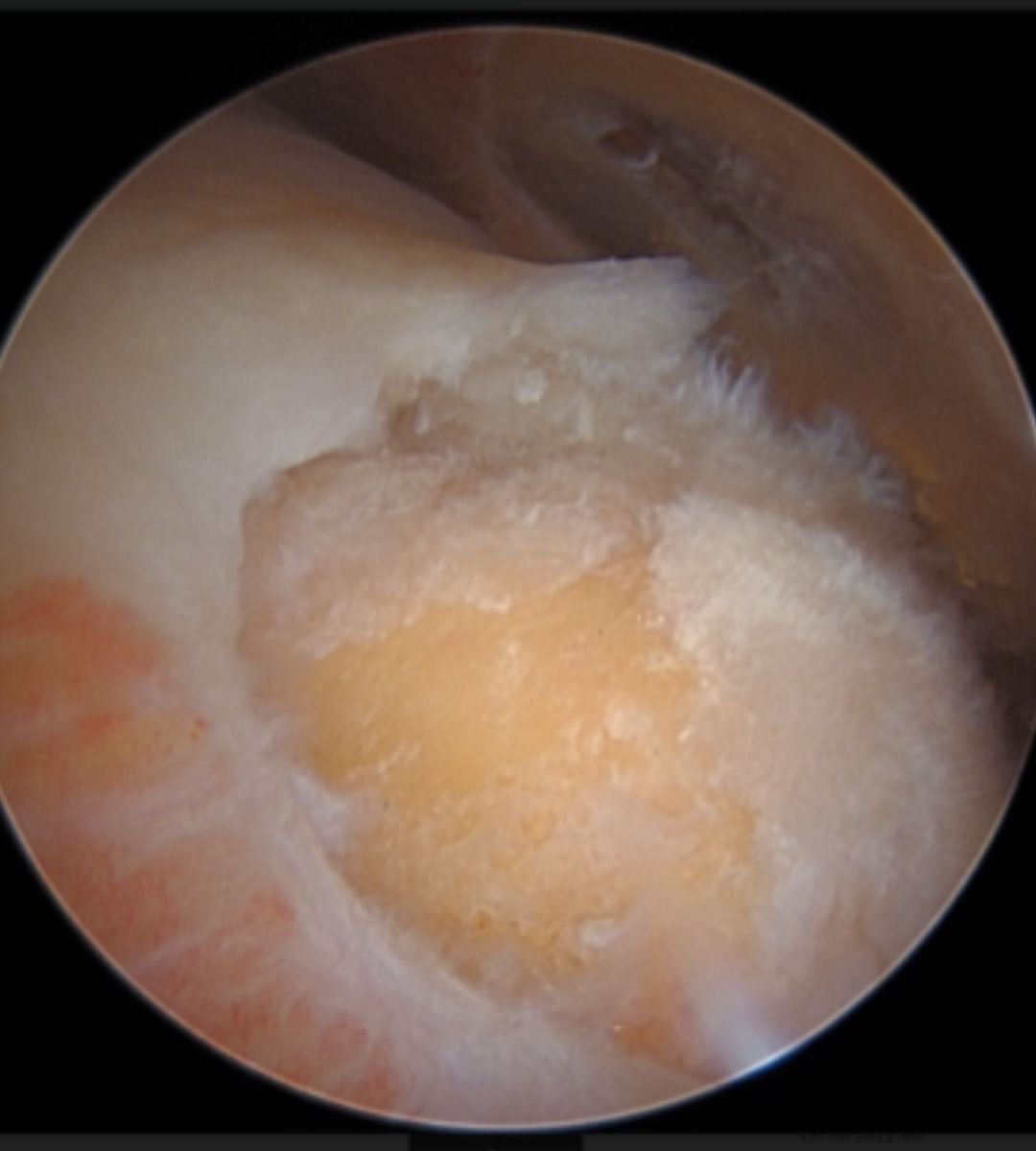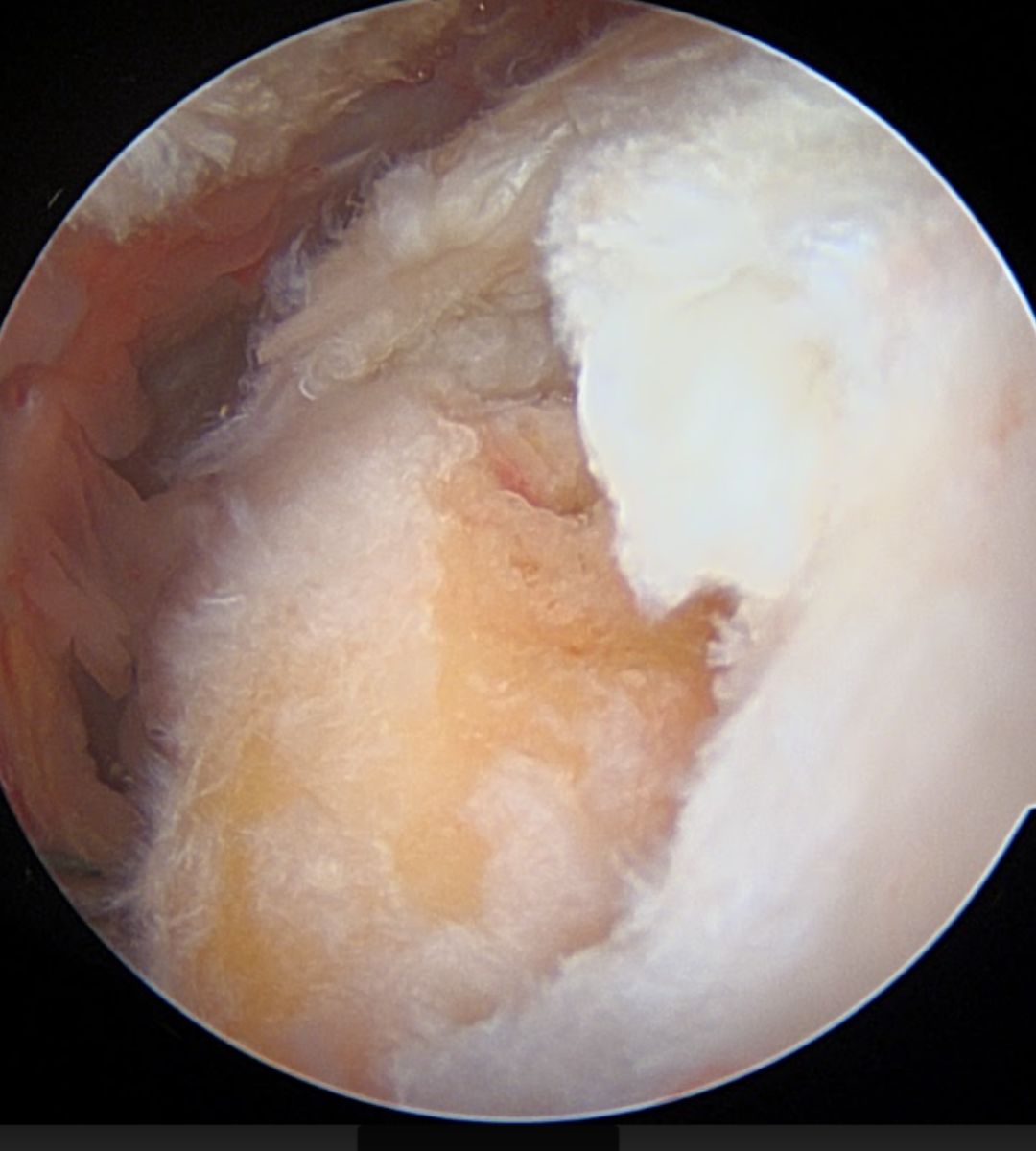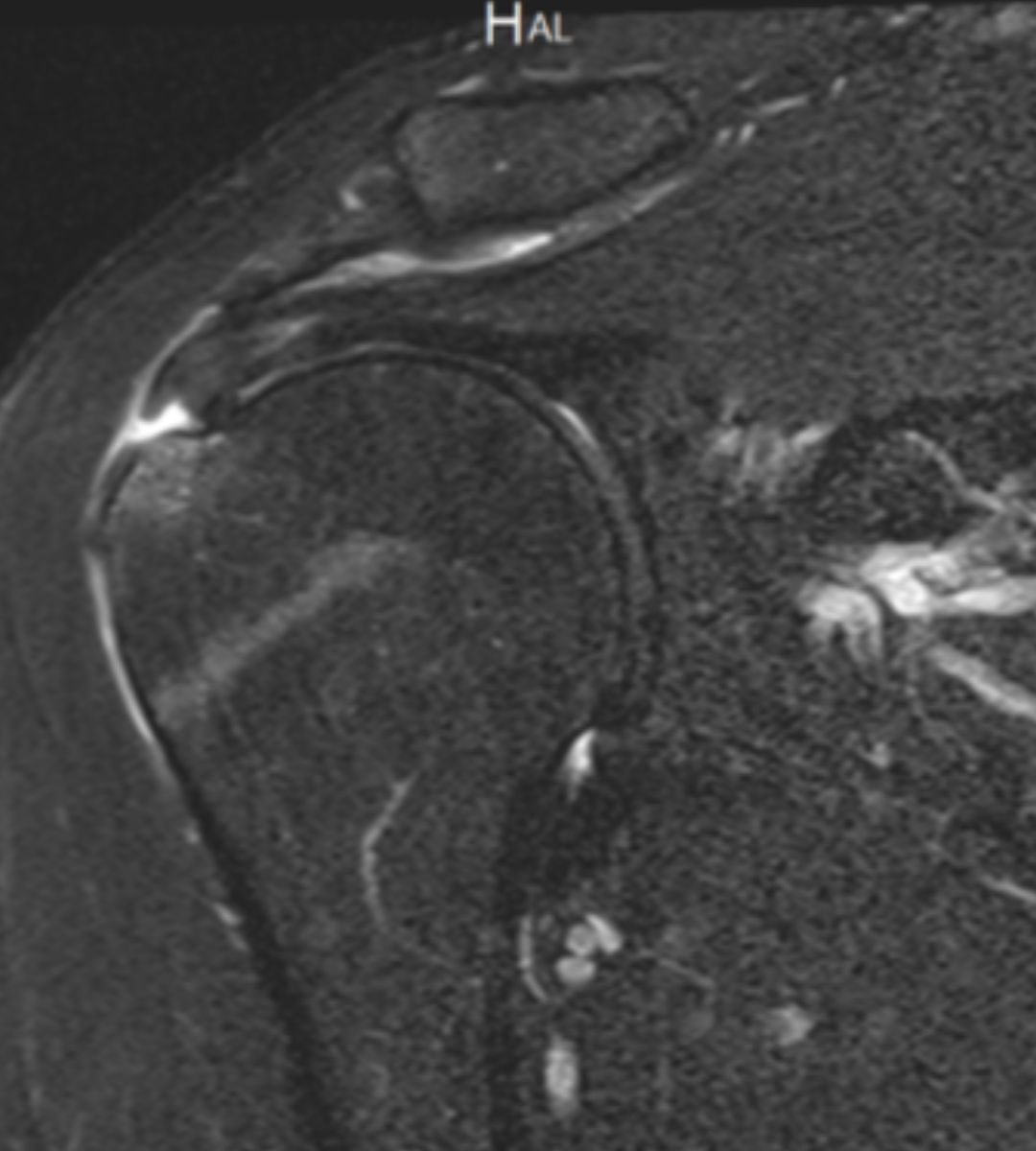Rotator Cuff Rupture
What is a Rotator Cuff Tear?
What is a Rotator Cuff Tear?
The Rotator Cuff is a functional structure of the shoulder consisting of 4 muscles and their respective tendons: supraspinatus, infraspinatus, subscapularis and teres minor . These originate in the shoulder blade and insert into the proximal humerus. As a unit, they have the function of assisting in the elevation and rotation of the shoulder while providing stability by centralizing the humeral head in the glenoid of the shoulder blade.
Rotator cuff tears are a common cause of pain and disability, and are one of the main reasons why patients seek out an orthopedic specialist in the shoulder and require surgical intervention.
A rotator cuff tear means that one of these tendons is no longer partially or completely inserted into the humerus. As expected, a rotator cuff tear can cause a decrease in shoulder strength , affecting daily activities and making it painful and difficult to perform simple tasks such as combing your hair or brushing your teeth.
The tendon most commonly affected by these injuries is the supraspinatus , but any of the other tendons can be affected. Rotator cuff tears can be partial, when there are still some fibers of the tendon preserved, or total/complete when the entire thickness of the tendon is involved and there is literally a “hole” in the tendon.









What causes a rotator cuff tear?
What causes a rotator cuff tear?
Aging is the main risk factor for tendon rupture, as the degenerative changes associated with age “weaken” the tendon and make it more susceptible to injury and rupture. Rotator cuff tears can be divided into 2 large groups: acute and degenerative:
Degenerative or “wear and tear” tears: these are the most common. Age plays the most important role, although other factors such as a sedentary lifestyle, repeated efforts, poor posture at work and tobacco consumption are associated with an increased prevalence of these injuries.
Acute or Traumatic Ruptures: Ruptures associated with falls or accidents that cause trauma to the upper limb or related to intense efforts such as trying to pick up or push a heavy object. They generally occur in a slightly younger population.
What are the risk factors?
What are the risk factors?
- Age
- Bad posture
- Sedentary lifestyle
- High impact sports
- Sports or work activity that requires repetitive and overloading movements
Signs and Symptoms of Rotator Cuff Tear
Signs and Symptoms of Rotator Cuff Tear
Pain and decreased strength are the most common symptoms, and may be accompanied by decreased mobility:
Deep, non-palpable shoulder pain. Pain that radiates to the side of the arm, to the elbow or to the neck. Pain that prevents you from adopting a comfortable sleeping position. Decreased muscle strength, making it difficult to perform common daily tasks. Decreased shoulder mobility, more easily identified in women by difficulty fastening a bra.
The way symptoms appear and their intensity depend on the type of rupture:
In degenerative tears , symptoms appear gradually and progressively, without the patient remembering any event that triggered their complaints. The pain is not always very intense and can be described as discomfort when performing certain tasks. Functional and mobility limitations are not always very marked, since the shoulder joint is able to progressively adapt to this injury and compensate with the remaining intact structures.
In acute ruptures , there is an event clearly related to the rupture, be it direct trauma, a fall or an accident. As the injury occurs suddenly, there is no time for progressive adaptation, so the pain and functional limitation are generally more intense.
Diagnosis of Rotator Cuff Tear
Diagnosis of Rotator Cuff Tear
Physical examination
Physical examination
Painful and often decreased range of motion. Decreased strength demonstrated by endurance testing
X-ray
X-ray
In more advanced stages of the disease, it may demonstrate elevation of the humeral head and osteoarthritis.
It allows other causes of shoulder pain such as fractures, calcifications and tumors to be ruled out.
Magnetic Resonance Imaging
Magnetic Resonance Imaging
Diagnostic examination par excellence that allows the diagnosis of tears, identification of the affected tendons and evaluation of the rotator cuff muscles. It should be performed whenever a rotator cuff tear is suspected.
Rotator Cuff Tear Treatment
Rotator Cuff Tear Treatment
Decision
Decision
The best treatment should always be individualized to the specificities of each patient, necessarily considering age, level of physical activity, size and severity of the injury and intensity of symptoms.
Based on current knowledge, the only way for the tendon to heal is through surgical repair. If a rotator cuff tear is left untreated, it can lead to significant limitations in function and mobility. Tears can be progressive, i.e., they can grow larger over time, turning partial tears into total tears.
Conservative
Conservative
When to perform? Treatment of choice for degenerative tears, especially in older and less active patients.
Treatment options?
Treatment options?
- Medication and Ice – Oral anti-inflammatories and analgesics in combination with topical medication can be effective in treating pain, especially if symptoms are recent. Their effectiveness decreases with chronicity of symptoms. Ice also has an important anti-inflammatory action in rotator cuff tears.
- Physiotherapy/Rehabilitation – Essential for trying to find a “new balance” for the shoulder and thus reducing pain and restoring range of motion. Even patients with large tears can have a good range of motion and be able to carry out their daily activities as long as the biomechanics of the shoulder can be reestablished, compensating for the “torn” tendons.
- Shoulder Infiltration – Corticosteroids – Corticosteroids are potent anti-inflammatory drugs. The purpose of corticosteroid infiltrations is to treat difficult-to-control pain.
- Infiltration with PRPs (Growth Factors) – PRPs or platelet-rich plasma are growth factors that can help heal the inflammatory process and regenerate the degenerated tendon. This technique involves using the patient’s own plasma and platelets, which are previously extracted and then centrifuged to prepare these growth factors for later infiltration into the injured area. This procedure is performed on an outpatient basis and the patient is discharged immediately after the infiltration, if clinically stable.
Surgical
Surgical
- When to perform it? In acute ruptures, it is the treatment of choice. Most studies show that in acute ruptures, surgical treatment is superior to conservative treatment. In degenerative ruptures in young and active patients. In degenerative ruptures that do not respond to conservative treatment for a minimum period of 3 months. Pseudoparalytic shoulder.
- Procedure/technique – Arthroscopic Rotator Cuff Suture – Arthroscopy is a minimally invasive procedure in which a scope/camera is used to observe the entire shoulder joint and in which, through other small incisions, work instruments and suture anchors are introduced to allow the tendon or tendons to be repaired. This technique allows the patient to be discharged the same day or to spend only one night in hospital.
Postoperative
Postoperative
- The shoulder is immobilized with a brachial suspensory which reduces pain related to the procedure as well as protecting the tendon repair.
- The patient can begin passive and pendular movements immediately after surgery, properly supervised by a therapist.
- It takes between 6 to 8 weeks for the tendon to heal.
- Physiotherapy: physiotherapy is necessary for an average period of 6 months, but the recovery time depends on the size of the tear; in small tears a shorter recovery of up to 4 months can be expected, while in a large tear the recovery time can range from 6 months to 1 year.
How to prevent rotator cuff rupture?
How to prevent rotator cuff rupture?
A healthy lifestyle with regular physical exercise is the only known way to help prevent this disease, as it allows the shoulder to maintain balance and stability.
When to seek an Orthopedic Specialist?
When to seek an Orthopedic Specialist?
You should seek an orthopedic specialist in the following situations:
- Pain requiring analgesic medication for more than 3 days in a row
- Pain lasting more than a week without the need for medication
- Symptoms associated with trauma or accident
- Nighttime pain that interferes with sleep
- Decreased mobility
- Decreased strength